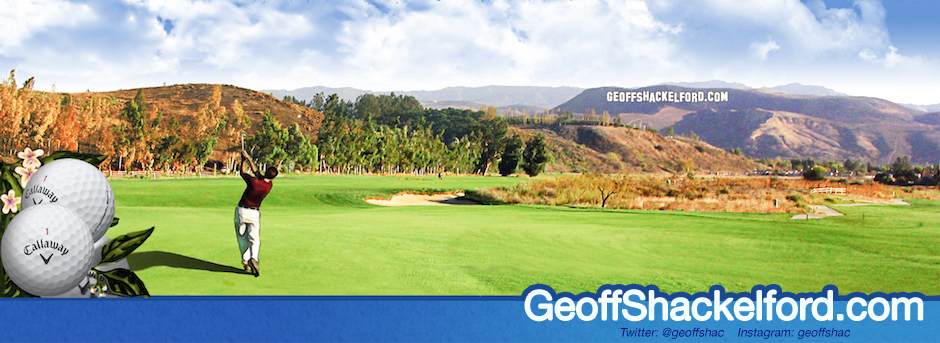8,500-Yard Crowd: Remember Torrey, J.B. & What You Ask For
Over the years the common refrain for dealing with distance gains has suggested higher rough and longer courses. Or, just narrowness and rough--anything but tweaking the rules already in place governing ball distance.
 In recent months, the 8,500 yard number has been floated as the yardage needed to restore long irons and protect the golf ball from those who want to do it harm. This absurd, acreage-engulfing number apparently stemmed from Erin Hills which apparently resonated with some. Most felt a sense of irrational scale and emptiness post-U.S. Open, realizing the unproductiveness of chasing a larger footprint.
In recent months, the 8,500 yard number has been floated as the yardage needed to restore long irons and protect the golf ball from those who want to do it harm. This absurd, acreage-engulfing number apparently stemmed from Erin Hills which apparently resonated with some. Most felt a sense of irrational scale and emptiness post-U.S. Open, realizing the unproductiveness of chasing a larger footprint.
Torrey Pines South is a five-and-half-hour course in benign conditions, but takes the world's best nearly six hours if there is any decent wind, the usual stout rough and speedy greens. The South is just a touch over 7,600 yards with a only few long walks to post 2001 back tees--1 to 2, 9 to 10, 12 to 13, 14 to 15--nothing like many lengthened courses where players can spend up to 20 minutes of their round just walking to added tees.
And while this should not have to be pointed out, it takes longer to play an 8,500 yard course than a 7,500 yard course and definitely more time than touring a 6,500 yard course.
The 2018 Farmers could not be completed Sunday under sunny skies even with an earlier start than Saturday. And while J.B. Holmes is legitimately mocked for his rude final hole pace, do not lose sight of the overall pace issues faced by 77 elite players: longer and narrower is not a healthy solution.
 Monday, January 29, 2018 at 10:35 AM
Monday, January 29, 2018 at 10:35 AM  9 Comments | in
9 Comments | in  2018 PGA Tour,
2018 PGA Tour,  Slow Play,
Slow Play,  State of the Game,
State of the Game,  Technology
Technology 











Reader Comments (9)
Bingo.
Provide carts for them.
And for playoffs - the gap between shots is very boring.
The Champions Tour uses carts, I think, and like "clean and place' the TV producers appear to keep the innovation secret from viewers.
Golf Club Atlas topic today by Thomas Dai “75%? Would you be….” Is an interesting one. He askes “Would you be happy to play courses 75% the length of those you currently play using a golf ball that only goes 75% the distance of the present one you use?
The answer – well in my opinion, cannot be solved by just rolling back the golf ball, we have to be more proactive in the designs of our courses, without that roll back in any form would not work.
Before proceeding any further, I would question the 75% figure and suggest it should be closer to 60% or in simpler terms a scratch player should be able to hit between 180-200 yards. This would allow for the exceedingly fit play to perhaps achieve 210 even 220yds on a very good day. This, I believe would equate to the game as it was played in the 1890’s.
However, without the course offering up real hazards it would be completely pointless, and allow the gifted players an easy passage to the pin, and this most certainly is not the intention, but one of common sense and good management of our game and its assets – our courses. Rollback may even assist in regaining what has been lost within modern design i.e. our courses that are again defined as ‘sporty’ with active hazards for all level of players/golfers. Just think we could play The Old Course at St Andrews and experience the true wonders of golf on golf courses actually balanced for the game of golf.
Rollback can work, but only if we also address course design and, yes, reinvent ‘penal’ with our the strategy of constructive design.
Longer runways are needed. Tee it high and let it fly. Good for the game.